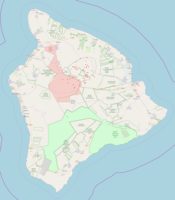
Photo from wikipedia
Previous investigation of seismic anisotropy indicates the presence of a simple mantle flow regime beneath the Turkish-Anatolian Plateau and Arabian Plate. Numerical modeling suggests that this simple flow is a… Click to show full abstract
Previous investigation of seismic anisotropy indicates the presence of a simple mantle flow regime beneath the Turkish-Anatolian Plateau and Arabian Plate. Numerical modeling suggests that this simple flow is a component of a large-scale global mantle flow associated with the African superplume, which plays a key role in the geodynamic framework of the Arabia-Eurasia continental collision zone. However, the extent and impact of the flow pattern farther east beneath the Iranian Plateau and Zagros remains unclear. While the relatively smoothly varying lithospheric thickness beneath the Anatolian Plateau and Arabian Plate allows progress of the simple mantle flow, the variable lithospheric thickness across the Iranian Plateau is expected to impose additional boundary conditions on the mantle flow field. In this study, for the first time, we use an unprecedented data set of seismic waveforms from a network of 245 seismic stations to examine the mantle flow pattern and lithospheric deformation over the entire region of the Iranian Plateau and Zagros by investigation of seismic anisotropy. We also examine the correlation between the pattern of seismic anisotropy, plate motion using GPS velocities and surface strain fields. Our study reveals a complex pattern of seismic anisotropy that implies a similarly complex mantle flow field. The pattern of seismic anisotropy suggests that the regional simple mantle flow beneath the Arabian Platform and eastern Turkey deflects as a circular flow around the thick Zagros lithosphere. This circular flow merges into a toroidal component beneath the NW Zagros that is likely an indicator of a lateral discontinuity in the lithosphere. Our examination also suggests that the main lithospheric deformation in the Zagros occurs as an axial shortening across the belt, whereas in the eastern Alborz and Kopeh-Dagh a belt-parallel horizontal lithospheric deformation plays a major role.
Journal Title: Scientific Reports
Year Published: 2021
Link to full text (if available)
Share on Social Media: Sign Up to like & get
recommendations!